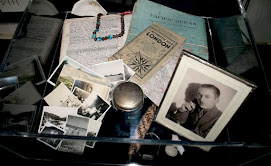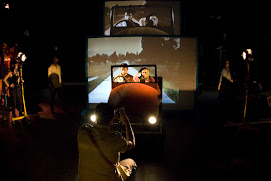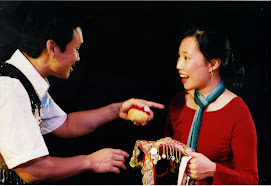‘On his deathbed, they say, Leonardo da Vinci regretted that he had left so much unfinished.’
Procrastination. Something I know intimately, as I suspect do many other writers. Although I’ve come to accept it as an integral—and perhaps necessary—part of the creative process, I still often berate myself for wasting time and not getting on with the task at hand. Since reading this delicious essay How to Procrastinate Like Leonardo da Vinci by W A Pannapacker, however, I’ve decided to stop with the scolding and embrace my “inner procrastinator”, because ‘Leonardo, it seems, was a hopeless procrastinator ... ’ and who am I to argue with Leonardo?
‘Of course, the therapeutic interpretation of Leonardo—and, perhaps, of many of us in academe who emulate his pattern of seemingly non-productive creativity—has a long history. Leonardo’s reputation spread at exactly the right time for someone to become a symbol of this newly invented moral and psychological disorder: procrastination, a word that sounds just a little too much like what Victorian moralists used to call “self-abuse.”
The unambiguously negative idea of procrastination seems unique to the Western world; that is, to Europeans and the places they have colonized in the last 500 years or so. It is a reflection of several historical processes in the years after the discovery of the New World: the Protestant Reformation, the spread of capitalist economics, the Industrial Revolution, the rise of the middle classes, and the growth of the nation-state. As any etymologist will tell you, words are battlegrounds for contending historical processes, and dictionaries are among the best chronicles of those struggles … ’
Read the rest of W A Pannapacker’s article on the Arts & Letters Daily website.
26 February 2009
22 February 2009
The View From There
In the second half of last year I worked on an international project called The View From Here. My contribution is a 12-minute radio script called Eyewitness Blues, and I'll probably put a short excerpt from it on this blog post its BBC broadcast. This is an edited version of information on the project website.
The View From Here is a collaboration between London’s Slade School of Fine Art, the Bartlett School of Architecture and the BBC. It explores notions of cultural translation and trans-positioning by artists working in different media, drawing from the 3 key project terms: transmit, translate, transmute.
For Transmit 4 visual artists, from Australia, China, Israel and Uganda, each filmed a 12-minute video in a locale connected to their work, under the title The View From Here. These works were then sent to a writer in the artist's country to author a radio drama inspired by it. These 12-minute dramas have been recorded for broadcast on the BBC World Service on 28 February 2009 in the final stage of the project. The artists are: Barbara Bolt (Australia), Xioapeng Huang (China), Shuli Nachshon (Israel), and Daudi Karungi (Uganda). The writers are: Noëlle Janaczewska (Australia), Dinos Chapman & Simon Wu (Hong Kong/UK), Katie Hims (Israel/UK) and Charles Mulekwa (Uganda).
Translate: Eleven PhD students from the Slade and Bartlett made a series of works, in response to either those 4 works or the theme. The works will further inspire other students, invited to the event as respondents, to reshape, translate, transpose the original works through a text/image/audio/performance piece of their own.
Transmute is a combination of a BBC Broadcast and a Live Event on the 27 February. This final event will combine the broadcast, the original films and the resulting re-interpretations.
It's all happening at the Slade Research Centre, Woburn Square, London WC1.
The View From Here is a collaboration between London’s Slade School of Fine Art, the Bartlett School of Architecture and the BBC. It explores notions of cultural translation and trans-positioning by artists working in different media, drawing from the 3 key project terms: transmit, translate, transmute.
For Transmit 4 visual artists, from Australia, China, Israel and Uganda, each filmed a 12-minute video in a locale connected to their work, under the title The View From Here. These works were then sent to a writer in the artist's country to author a radio drama inspired by it. These 12-minute dramas have been recorded for broadcast on the BBC World Service on 28 February 2009 in the final stage of the project. The artists are: Barbara Bolt (Australia), Xioapeng Huang (China), Shuli Nachshon (Israel), and Daudi Karungi (Uganda). The writers are: Noëlle Janaczewska (Australia), Dinos Chapman & Simon Wu (Hong Kong/UK), Katie Hims (Israel/UK) and Charles Mulekwa (Uganda).
Translate: Eleven PhD students from the Slade and Bartlett made a series of works, in response to either those 4 works or the theme. The works will further inspire other students, invited to the event as respondents, to reshape, translate, transpose the original works through a text/image/audio/performance piece of their own.
Transmute is a combination of a BBC Broadcast and a Live Event on the 27 February. This final event will combine the broadcast, the original films and the resulting re-interpretations.
It's all happening at the Slade Research Centre, Woburn Square, London WC1.
Labels:
The View From Here,
translation,
writing for radio
08 February 2009
Watching the Lorikeets
Their rowdy chatter wakes me up in the morning, and at dusk, when they return, I sit on the balcony and watch them. Until the dark enfolds them and they're lost to view.

Ferdinand Bauer: Rainbow Lorikeets, 1802
I knew absolutely nothing about rainbow lorikeets when they first caught my attention, but after a couple of trips to the library, a few book purchases, and a lot of looking, I'm a lot better informed—not only about lorikeets, but the parrot family more generally. This research has led me into some interesting areas and, as random, freewheeling research so often does, it's also given me ideas, stories, and material for other projects. One of which is a 7-ON commission for ABC Radio National. We've all been asked to write a half-hour radio script on the theme Old Texts Revisited. We can interpret 'texts' broadly, the only proviso being whatever text/s we chose to work with must predate the invention of radio. Being obsessed with maps, I was intending to look to cartography to supply my 'text', but now, thanks to these birds, I'm going to use something quite different.
Labels:
rainbow lorikeets,
research,
writing for radio
Subscribe to:
Comments (Atom)
+Photo+Leah+McGirr+3.jpg)



